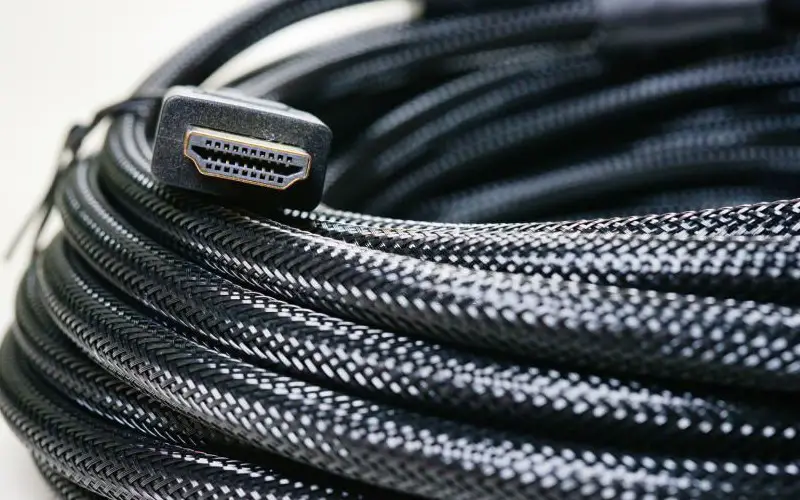For anyone who works with audio or video technology, it is important to understand the different formats and how to connect them most effectively. One of the most common questions is the difference between VGA and HDMI.
In this article, we will explore the differences between the two types of cables and explain why you might want to choose one over the other.
What is VGA?
VGA is an acronym for Video Graphic Array. IBM introduced the Video Graphic Array display standard in 1987 as part of its PS/2 line of personal computers. VGA is an analog interface that transmits video signals using a 15-pin 3-row connector.
It supports resolutions up to 640×480 at a 60 Hz refresh rate, with 256 colors out of a palette of 262,144 colors. IBM compatible laptops and desktop PCs continued to use VGA well into the 1990s and 2000s.
In recent years, however, digital interfaces such as HDMI and DisplayPort have supplanted VGA as the primary means of connecting computers to monitors and TVs. Nevertheless, many legacy devices still include VGA ports for compatibility with older equipment.
What is HDMI?
HDMI is an acronym for High-Definition Multimedia Interface. It is a proprietary interface that combines the transmission of both digital audio and digital video from an HDMI-compatible source such as a Set-Top Box, DVD Player, Blu-Ray Player, or HDTV.
The HDMI connection was first introduced in 2002 and has become the standard for HDTVs and other digital devices. The HDMI interface allows for the transfer of high-definition video and audio signals over a single cable, making it much easier to connect devices to HDTVs.
HDMI cables are also backward compatible with DVI connections, making them even more versatile.
Today, there are over 3 billion HDMI devices in use worldwide, making it one of the most widely used digital interface standards.
Most people are familiar with the HDMI interface because it is commonly used to connect high-definition televisions and Blu-Ray players. However, HDMI is also used in a variety of other applications, including computer monitors, projectors, and digital signage.
HDMI is a digital video standard that was introduced in 2002. It uses a 19-pin connector and can carry a resolution of up to 4K. It uses a small, rectangular connector that can be plugged into an HDMI-compatible device.
The HDMI interface is relatively easy to use, and it offers a high level of compatibility between different types of devices. As a result, it has become the most popular way to connect high-definition devices.
What is the Difference Between VGA and HDMI?
The main difference between VGA and HDMI is that HDMI is digital while VGA is analog. This means that HDMI can carry a higher resolution than VGA. It also means that you will need to use a digital-to-analog converter if you want to connect an HDMI device to a VGA display.
HDMI is the more popular standard nowadays, but VGA is still widely used. Here’s a look at the differences between the two:
VGA:
- It uses an analog signal.
- It has a maximum resolution of 1080p.
- It is not compatible with 4K or higher resolutions.
- It is not compatible with HDR.
HDMI:
- It uses a digital signal.
- It has a maximum resolution of 4K.
- It is compatible with HDR.
- It is the more popular standard nowadays.
As you can see, there are some major differences between VGA and HDMI. If you’re looking for the best possible picture quality, HDMI is the way to go. However, if you’re looking for compatibility with older devices, VGA is still a good option.
VGA vs HDMI: Which is Better?
If you have a choice between VGA and HDMI, we recommend choosing HDMI. It’s a newer standard with a higher maximum resolution. However, VGA is still common, and you’re likely to have a device that supports it.
In most cases, you won’t need to worry about the difference between VGA and HDMI. Pick the cable that fits your devices, and you’ll be all set.
Is VGA Good For 1080p?
Yes, VGA can support 1080p. However, the quality of the signal begins to drop off above 1920×1080 (1080p), which will cause a drop in image quality due to the analog nature of the signal.
With a good enough cable and transceiver on either end, though, it can be used for resolutions up to and including 2048×1536. So if you’re looking to connect a device with a resolution higher than 1080p, VGA is still an option worth considering.
Is HDMI Good For Gaming?
Yes, HDMI is good for gaming. It offers a high maximum resolution and supports HDR. Plus, it’s the most common way to connect a gaming console to a TV.
Should I Use HDMI or DisplayPort?
HDMI and DisplayPort are good options for connecting a computer to a monitor. However, DisplayPort is generally the better option. It offers a higher maximum resolution and is more versatile.
Conclusion
VGA and HDMI are two different types of cables that are used to connect devices to displays. HDMI is the newer standard and supports higher resolutions. VGA is still common, but it has a lower maximum resolution. In most cases, you can just choose the cable that fits your devices.
I hope you found this article helpful. If you have any questions, please feel free to leave a comment below.
Thanks for reading!







thank you for the work done.
You’re welcome! Glad it was helpful.